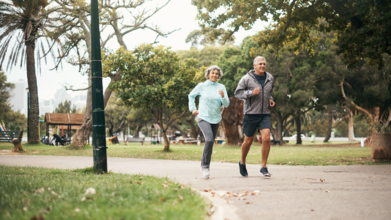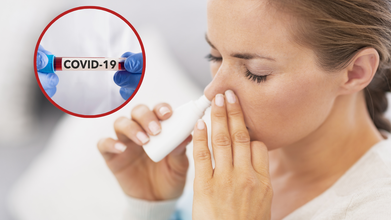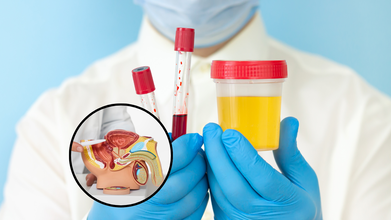- Health Conditions A-Z
- Health & Wellness
- Nutrition
- Fitness
- Health News
- Ayurveda
- Videos
- Medicine A-Z
- Parenting
- Web Stories
Dave Bautista's 75-Pound Weight Loss Secret: Workout And Diet Tips That’s Shaped Him

Dave Bautista weight loss
Dave Bautista Weight Loss: Dave Bautista, a name synonymous with raw power and imposing presence, is making headlines not just for his roles but for his remarkable transformation journey. The former WWE superstar, now a leading figure in Hollywood, has recently been vocal about his weight loss and health, addressing fan concerns and shedding light on his evolving physique.
Dave Bautista Weight loss: Transformation Fueled by Role Demands?
Dave Bautista’s physique has always been a point of fascination, from his days as a dominating force in the WWE to his impressive roles in Hollywood blockbusters. However, his recent weight loss has sparked discussions among fans and critics alike. Bautista himself has been candid about his weight fluctuations, attributing significant changes to his roles in film.
In 2023, Bautista appeared in M. Night Shyamalan’s psychological thriller 'Knock at the Cabin'. For this role, he bulked up to a staggering 315 pounds, a weight he describes as "uncomfortably big." "I started trimming down because I just got fat," Bautista admitted in an interview. The weight gain was intentional, a necessity to fit the director’s vision for his character, Leonard, a hulking figure in the film.
Bautista's approach to gaining weight was swift and unorthodox—through indulgent foods like French fries and pancakes, rather than a structured diet plan.
The former WWE star candidly discussed his recent weight loss and revealed he's pushing himself hard to maintain his new physique.
"I began slimming down because I felt I had become too heavy," Bautista shared on Chris Van Vliet’s YouTube channel. "For a role, I got exceptionally large—uncomfortably so. I reached about 315 pounds quickly, fueled by a diet of French fries and pancakes."
Despite the success of his role, Bautista found the weight gain challenging. "I probably overdid it. I was probably a little too big," he reflected. The process of shedding the excess weight proved arduous and slow, with Bautista noting the discomfort and prolonged effort involved in returning to a more manageable size.
Bautista’s journey to shed the weight he gained for 'Knock at the Cabin' is a testament to his commitment to health and wellness. After wrapping up the film, Bautista embarked on a significant weight loss journey. As of now, he stands at 240 pounds—a weight he hasn't seen since his late teens. The transformation has not only improved his physical appearance but also his overall well-being.
The actor has openly discussed the dietary and lifestyle changes that facilitated his weight loss. "I’m training hard, but my calories are pretty restricted," Bautista revealed. He follows a daily intake of around 2,500 calories, significantly less than what he consumed during his weight gain phase.
Additionally, Bautista practices intermittent fasting, often delaying his first meal of the day until late in the afternoon and avoiding eating three to four hours before bedtime.
What Diet Dave Bautista Follow?
Bautista's diet has evolved significantly over the years. In his earlier days, his dietary regimen was centered around high protein and caloric intake to support his bodybuilding career. However, after discovering a dairy allergy in 2005, Bautista made notable changes, including cutting out red meat, pork, and eventually poultry. His current diet is predominantly plant-based, with occasional fish and eggs.
In an October 2021 interview — before his "Knock at the Cabin" weight gain — Bautista told Men's Health he eats a mostly plant-based diet with "fish a couple times of the week."
He said when he was younger during his bodybuilding days, he ate a lot of calories and protein. But then Bautista learned he was "terribly allergic to dairy" in 2005, so he cut that out of his diet. He went on to say he cut out red meat and pork in 2010, and then in 2021, stopped eating poultry as well.
He has also integrated specific meal strategies to maintain his health while on set. Bautista ensures he eats every four hours during filming, with snacks like almond butter and banana or a vegan grilled cheese. His love for sushi also remains a staple in his diet. This shift towards a more balanced, plant-based diet reflects his broader commitment to long-term health.
"But I do have fish a couple times a week and I do eat eggs," he said at the time. He added that someday he plans to go vegan.
"Then, in between those (on-set) meals, if I get hungry, I typically do an almond butter and banana or a vegan, gluten-free grilled cheese, it's my favorite go-to."
His other favorite meal is sushi, he says. "Every day, all day," he joked.
Batista told Men's Health he takes a "ton of ... old man health supplements" like CoQ10, ribose and fish oil. He also clarified that he works out every day, sometimes twice a day.
Dave Bautista Workout Routine
Bautista’s fitness routine is as dynamic as his career. During his WWE years, his workouts were heavily focused on bodybuilding. However, as he transitioned into acting, his regimen diversified. Today, Bautista incorporates a mix of weight training, cardio, and martial arts into his routine.
One of his favorite exercises is squats, a testament to his commitment to leg strength. He also emphasizes the importance of cardiovascular health through activities like boxing and cycling. Bautista’s at-home gym features an array of equipment, including a spin bike and a boxing ring, reflecting his diverse fitness interests. His dedication to martial arts, particularly Brazilian jiu-jitsu, underscores his holistic approach to fitness.
Bautista’s transformation is not merely physical but also a reflection of his adaptability and commitment to health. His experience highlights the challenges and rewards of navigating body changes for professional roles while maintaining overall well-being.
He said he gets his cardio using at-home spin bike and has his own boxing ring.
"My favorite type of training, which I prefer over weight-training, is actually martial arts," he said, noting he does Brazilian jiu-jitsu in addition to boxing- the Men's Health video showed the star has an elaborate at-home gym — but also has other exercise interests, like boxing and cycling.
Despite his significant weight loss, Bautista has faced mixed reactions from the public. Some fans have expressed concern, misinterpreting his leaner appearance as a sign of ill health. Bautista reassures them, explaining that at 6'4" and 240 pounds, he remains a large individual. "People think I’m anorexic because they’ve seen me bigger," he noted. "But I’m still just a large human being."
Disclaimer: This article is for informational purposes only and is not a substitute for professional medical advice. Tips and suggestions mentioned in the article are for general informational purposes only and should not be construed as professional medical advice. Always consult your doctor or a dietitian before starting any fitness program or making any changes to your diet.
We May Be Living Longer, But Not Healthier: Study Reveals The Real Reason For Increased Lifespans

(Credit-Canva)
Did you know? If you were born in the 1900s the maximum age you were expected to survive to was merely 32? According to the Our World in Data, that was the average life expectancy in 1900s, and now, it has more than doubled to 71 years of age.
People are living longer than ever, but that doesn't always mean they're living healthier. The time we spend alive but not in good health is called the "healthspan-lifespan gap." This gap is a growing concern because it shows the difference between how long we live and how many of those years we live without disease.
In a new study, researchers at the Mayo Clinic looked at this gap across 183 countries to see what factors, like a country's wealth, health issues, or population, might be making the gap bigger or smaller.
What Were The Biggest And Smallest Gaps In Years
Longest and shortest lives were recorded as Europe, which has the highest average lifespan at around 78.6 years, and Africa, which has the lowest at 64.1 years.
Europe also has the longest "healthspan" (years lived in good health) at 68.8 years. Africa has the shortest at 55.6 years.
Surprisingly, the healthspan-lifespan gap is widest in regions like Europe (9.9 years) and the Americas (9.6 years), and smallest in Africa (8.3 years).
The U.S. has a particularly large gap, at 12.4 years, the United States has the widest healthspan-lifespan gap of any country in the study.
Why Does The Difference In Lifespans Keep Increasing?
The study's most concerning finding is about the future. Researchers looked at how the healthspan-lifespan gap has changed over the last 20 years and used that information to predict what will happen next.
They found that the gap is getting bigger every year. They predict that by the year 2100, the amount of time people spend living with a disease will have grown by 22% around the world. This means that while we may live to be very old, we can expect to spend more of our later years dealing with health problems. The study found a few key factors that consistently contributed to the healthspan-lifespan gap:
Non-Communicable Diseases (NCDs)
These are long-lasting illnesses that can't be passed from person to person. They include things like heart disease, diabetes, and cancer. The study found that these diseases are the biggest problem worldwide and are the main reason for the healthspan-lifespan gap. The Americas, in particular, have a very high number of these diseases, which is why their gap is so wide.
Injuries
The study showed that injuries, from accidents to violence, are a surprisingly big issue, especially in Europe. In fact, injuries cause twice as many health problems in Europe as they do in Africa. This high number of injuries is a major reason why Europe's healthspan-lifespan gap is so large.
Mental Health
Mental and substance use disorders, such as depression or addiction, are a problem everywhere in the world. The study found that these issues affect all regions equally, regardless of their wealth or location. This shows that mental health is a widespread challenge that all countries need to address.
COVID Symptoms Affected By 70% By Over-The-Counter Nasal Spray Available In Stores: Study

(Credit-Canva)
The world is always changing, and so is the COVID-19 virus. As new versions of the virus appear, scientists are working hard to find new ways for people to stay protected. During the peak COVID years, we had vaccinations that helped us stay immune, however as new strains pop up, it is important that we stay protected and ensure our health.
A recent study has a surprising finding, a simple, over-the-counter nasal spray called azelastine might help keep you from getting sick with COVID-19. This spray has been used safely for many years to treat allergies and is sold under brand names like Astepro Allergy and other generic versions.
How Effective Is The COVID-19 Nasal Spray?
A study from the medical journal JAMA Internal Medicine found that the azelastine nasal spray can significantly lower your risk of catching COVID-19. The study involved 450 people, and they were split into two groups. One group used the azelastine spray three times a day for 56 days, while the other group used a spray that did nothing. The results were very encouraging:
- Only 2.2% of the people who used the real nasal spray tested positive for COVID-19.
- In the group that used the fake spray, 6.7% of people got sick.
This big difference shows that the spray could offer real protection. Doctors believe that the spray’s ingredients have special properties that make it harder for the virus to grow in your nose and throat. It also helps reduce swelling, which can make it more difficult for the virus to take hold and spread.
Experts warn that this spray is not a perfect solution or a replacement for vaccines. However, because it's so safe and easy to find, it could be a useful tool for people in risky situations, like on an airplane or at a crowded event. The study’s researchers now want to do more research to see if the spray can also protect against other viruses, such as the flu and RSV.
Current Symptoms of COVID-19 2025
A key symptom that has been widely reported with this variant is an unusually severe sore throat, often described as feeling like "razor blades." Sore throats are a common symptom of COVID-19, but with the NB.1.8.1 variant, the pain can be particularly intense. Experts believe this is because the virus, which is a part of the Omicron family, is very effective at attacking and damaging cells in the throat. This can lead to a significant inflammatory response, resulting in a sharp, "razor blade" type of discomfort.
If you're experiencing a severe sore throat or other common COVID-19 symptoms, it's important to get tested. The symptoms of the NB.1.8.1 variant are similar to other illnesses like the flu or common cold, so testing is the only way to confirm a diagnosis. The most common symptoms include:
- Fever or chills
- Runny or blocked nose
- Dry cough
- Fatigue and headache
- Muscle aches and body pain
- Gastrointestinal issues like nausea or diarrhea
For at-home relief, you can use over-the-counter pain relievers, drink plenty of fluids, and rest. If your symptoms worsen or you have difficulty breathing, you should seek medical attention immediately.
Prostate Cancer Can Now Be Detected Through These Identifiers In A Non-Invasive Urine Test

(Credit-Canva)
A silent killer that is the second leading cause of death among American men, prostate cancer is a disease that has recently come to the forefront of medical research. Studies and new reviews are being done as rates of prostate cancer rise. In 2022, according to the World Cancer Research Fund, there were 1,467,854 cases of prostate cancer in the world.
Diagnosing prostate cancer can be an invasive procedure, like a core needle biopsy or a rectal examination. However, researchers may have found a non-invasive test that could help them identify prostate cancer.
Researchers at Johns Hopkins and other institutions have developed a way to test for prostate cancer using a urine sample. This new method could drastically reduce the need for painful and often unnecessary biopsies.
Why Do We Need Better Tests For Prostate Cancer?
Right now, doctors often check for prostate cancer with a blood test that measures something called prostate-specific antigen (PSA). The problem is, the PSA test isn't very precise. A high PSA level can be a sign of cancer, but it can also be a sign of other, less serious issues like an enlarged prostate. Because of this, many men with high PSA levels are told to get a biopsy, which involves using a needle to take tissue samples. This can be painful and sometimes leads to complications. A new test that's more accurate could save a lot of people from having to go through a biopsy they don't need.
How Does The New Urine Test For Prostate Cancer Work?
The new test works by looking for three special biomarkers—TTC3, H4C5, and EPCAM—in a person's urine. These biomarkers are tiny substances that are a sign of prostate cancer. To make sure these biomarkers were truly linked to cancer, the researchers collected urine from men with prostate cancer before and after they had surgery to remove their prostate. They found that the biomarkers were present before the surgery but almost completely disappeared afterward. This proved that they came directly from the prostate cancer tissue.
This new test is also very accurate. In a study, it correctly identified prostate cancer in 91% of people who had it. It also correctly showed that 84% of people who didn't have cancer were in the clear. This is a big improvement over the current PSA test, as it can tell the difference between cancer and other issues, like an enlarged prostate.
Benefits of This Prostate Test for Patients
This new urine test has several major advantages for patients. First, it's noninvasive, which means it's as simple and painless as a regular urine sample. There are no needles or uncomfortable procedures involved. Second, it's more accurate. It can better distinguish between prostate cancer and other conditions like prostatitis (an inflamed prostate) or benign prostatic hyperplasia (an enlarged prostate), which often cause confusion with the current PSA test.
Finally, this test can reduce unnecessary biopsies and help doctors find cancers that would have been missed. By providing a clearer and more precise diagnosis, doctors can feel more confident about who truly needs a biopsy and who doesn't. Researchers are currently working to make the test available for doctors to use in their clinics.
© 2024 Bennett, Coleman & Company Limited

